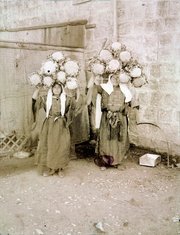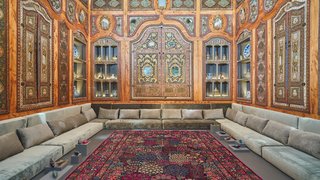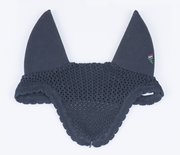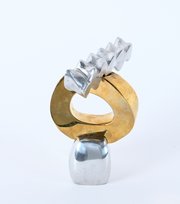
Steel War Mask
Museum of Islamic Art
- Title:
- Steel War Mask
- Production place:
- West Iran
- Date:
- 1475 - 1525
- Period:
- Timurid
- Title:
- Steel War Mask
- Production place:
- West Iran
- Date:
- 1475 - 1525
- Period:
- Timurid
- Material:
- Iron alloy, Gold
- Technique:
- Hammering, Repoussé, Engraving, Gilding, Peening, Casting, Perforating, Riveting
- Dimensions:
- 21 × 18.6 × 8
While war masks have a long history in western Asia dating back to antiquity, they were probably reintroduced into the Islamic world by the Mongols sometime in the 7th century AH/13th century CE. Illustrations dated to the mid-8th century AH/mid-14th century CE confidently support their existence, including battles from the Persian epic, the Shahnameh. This steel mask was designed to protect a soldier’s entire face, however, it would have also limited his peripheral vision and made breathing quite difficult. Nonetheless, such masks were worn as part of a military ensemble, attached to a helmet and armoured jacket. This example is subtly engraved with interlocking foliate patterns around its chin and forehead, which were originally inlaid with gold, now worn; only parts of the gold remain concentrated around the eyes, brows and moustache. An Arabic inscription also appears across the brow mentioning the word “al-adan”, meaning Eden, which has been interpreted as a possible allusion to Paradise. Such masks would have certainly elicited fear in the opponents when worn in battle.



